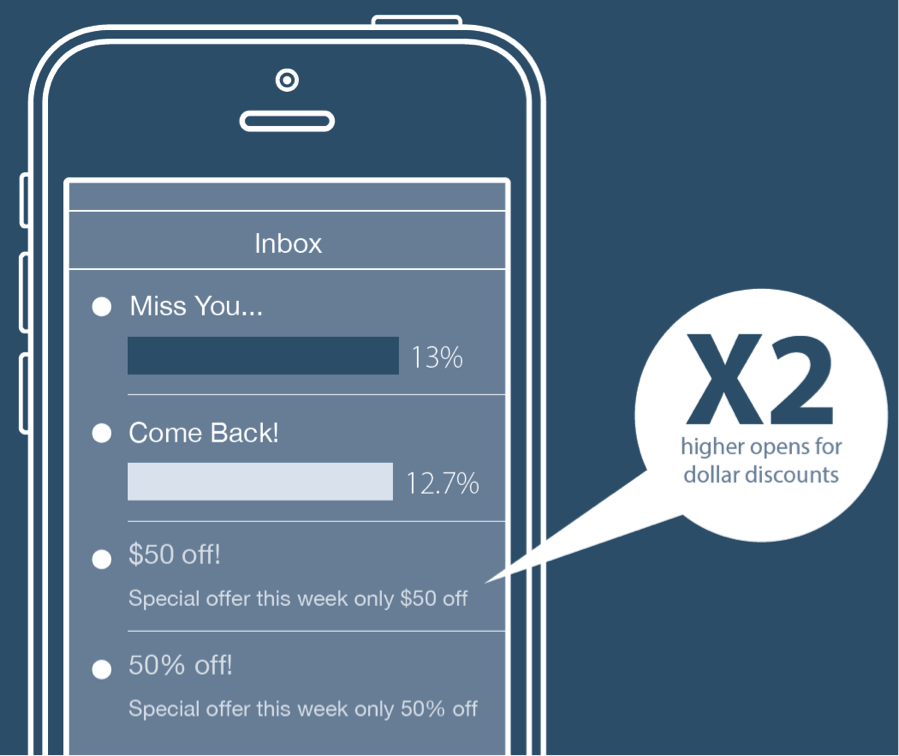Email Win-Back Programs: Do They Work?
For any marketer, not just email marketers, retaining customers is an important yet challenging task. Inactive subscribers present two problems to email marketers: one is obviously the lack of conversions or purchases that are the lifeblood of businesses; the other is reduced deliverability. As spam filters rely more and more on subscriber engagement, having a […]
For any marketer, not just email marketers, retaining customers is an important yet challenging task. Inactive subscribers present two problems to email marketers: one is obviously the lack of conversions or purchases that are the lifeblood of businesses; the other is reduced deliverability.
As spam filters rely more and more on subscriber engagement, having a high number of inactive accounts can cause a business’s emails to be delivered to spam, which further depresses response and conversion rates.
Win-back campaigns are used to combat inactive addresses, and they allow marketers to remove subscribers that are truly inactive. But, do they actually accomplish this?
The Good, The Bad, The Inactives
Our research found that a little over 66% of marketers’ email lists are inactive, and these inactive subscribers fall into four categories:
- Unengaged Secondary Email Accounts,
- Inactive Personal Email Accounts,
- Inactive Secondary Email Accounts and
- Idle Email Accounts.
Personal Email Accounts are defined as receiving most, if not all, personal emails. Secondary Accounts are email accounts that receive little to no personal email. Lastly, Idle Accounts are on the verge of being abandoned. These Idle Accounts have received little to no email in the past 30 days; and, the few emails received had nearly no interaction, hinting that the email address owner is no longer logging in.
From a deliverability perspective, the Idle Accounts are creating the most deliverability risk, followed by the Inactive Secondary accounts.
Win-Back Campaigns: The Tortoise & The Hare
Our research looked at the Internet Retailer’s Top 100 list and found that 33 brands were employing win-back campaigns. The inbox placement rates for companies employing win-back campaigns stood at 92% — a high number that shows that most inactive subscribers are receiving the win-back campaign in their inboxes.
These win-back campaigns had a 12% read (or open) rate, again a respectable number considering how many of these subscribers have not interacted with emails from these brands.
Much like the hare, our study showed that slow and steady wins the race. Forty-five (45%) of recipients who received a win-back campaign read a subsequent message; of that group, just 24% had read the first win-back message. Seventy-five percent (75%) of re-engaged subscribers had read a subsequent message within 89 days, and the other 25% were still opening messages up to 300 days after receiving the first win-back campaign.
While it is impossible to tell if the initial win-back campaigns had any influence on whether future messages were opened, it does show that marketers may be hurting themselves by removing email addresses from their file too early.

Takeaway: Three quarters of inactive subscribers could re-engage within 90 days, so don’t cull lists too early.
What Works (And Doesn’t)
If you plan to re-permission inactive subscribers, expect poor engagement and read rates. Return Path’s data show that less than 2% of subscribers that received a re-activation campaign opened it. This likely has more to do with the fact that they fall into the “Idle Account” category, so there’s no use keeping these names on file.
Subject Line: Emotionally charged subject lines like “We Miss You!” showed little difference in read rates than neutral subject lines like “A note from the CEO.” We also looked to see if there were any differences with copy like “miss you” or “come back.” Again, both had read rates of 13%.
Offer: The key to getting a win-back campaign opened has more to do with the offer. We looked at offers that promised a dollar-off versus a percentage-off a next purchase. A dollar-off discount consistently performed 2x better than a percentage discount.

Takeaway: Promotions in dollar terms performed the best. Test emotionally charged subject lines and percent-off offers, but don’t expect miracles.
Win-back campaigns can be extremely effective to re-engage subscribers, but marketers armed with the right data — like read rates and inbox activity — will be the most successful. Win-back campaigns should be ongoing, as opposed to a one-time event, for best results.
I’d love to hear your stories from the trenches on what works and what doesn’t when it comes to win-back campaigns.
Contributing authors are invited to create content for MarTech and are chosen for their expertise and contribution to the search community. Our contributors work under the oversight of the editorial staff and contributions are checked for quality and relevance to our readers. MarTech is owned by Semrush. Contributor was not asked to make any direct or indirect mentions of Semrush. The opinions they express are their own.
Related stories
